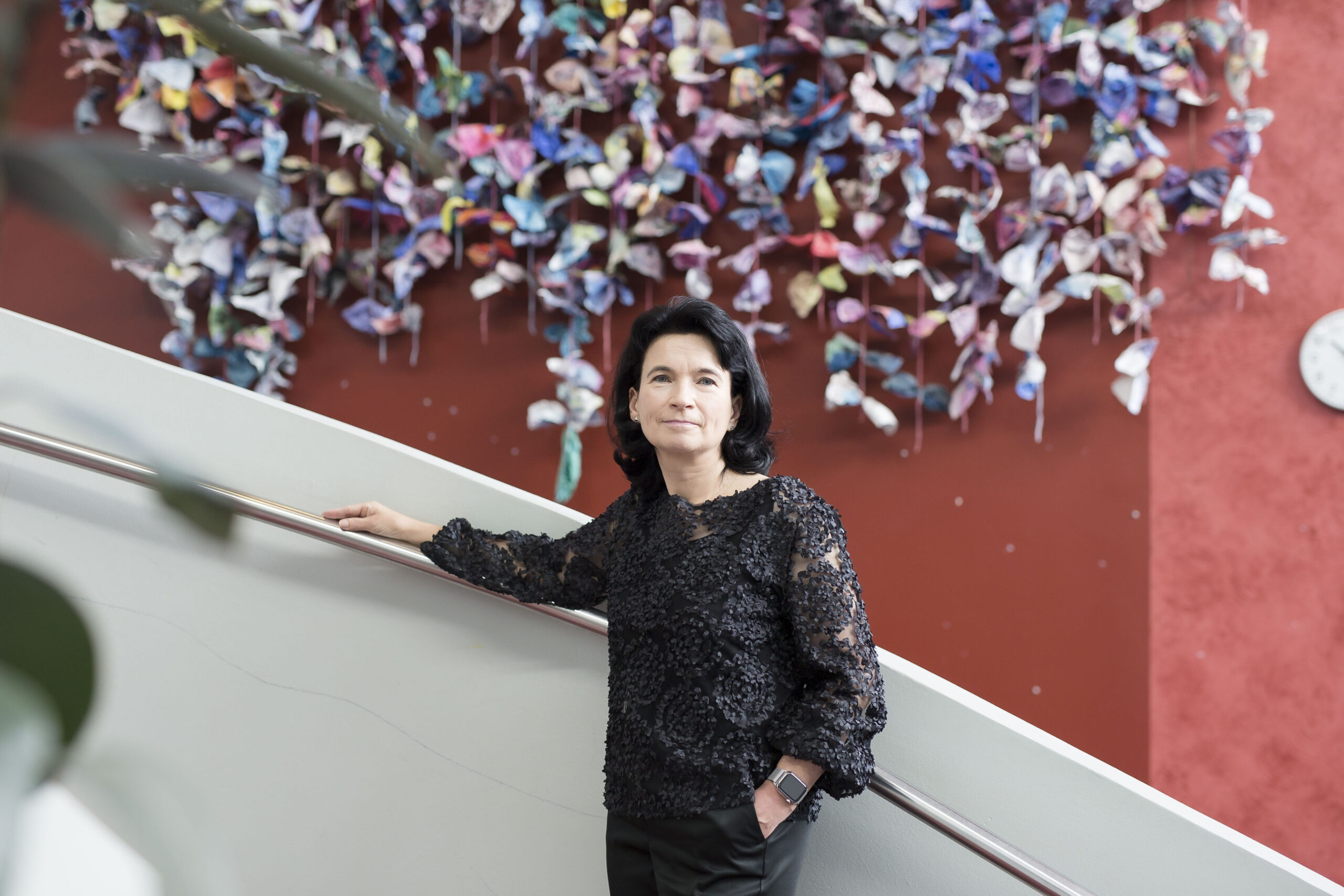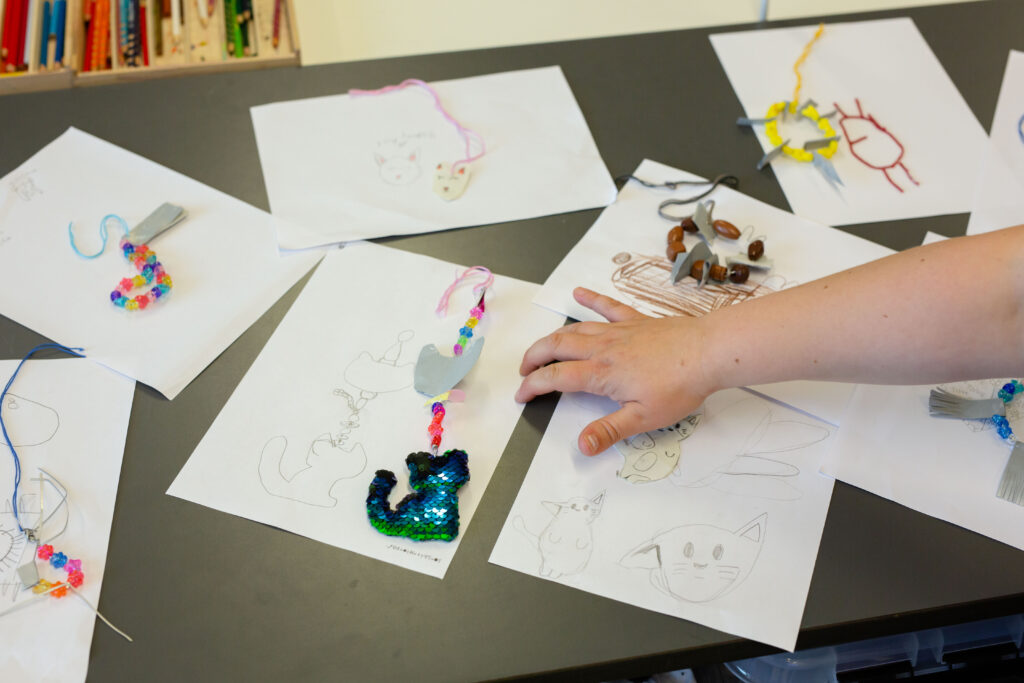
The 2023 Helsinki Design Award was awarded to Arabia Comprehensive School: “Design thinking is a skill for the future”
According to Mari Suokas-Laaksonen, the principal of Arabia Comprehensive School, design education is a common problem-solving tool for the entire school. The joint award by the City of Helsinki and Helsinki Design Week is a prestigious acknowledgment of the long-term work accomplished that also inspires other schools in the city.
The Helsinki Design Award jointly conferred by the City of Helsinki and Helsinki Design Week is a recognition of actions and creators that make our city a better place to live. This year, the award focuses on design learning and education, with which pioneering work has been done in Finland both at the grassroots level and at the city’s strategic level.

One of the pioneers of design education is Arabia Comprehensive School. Design thinking has been the backbone of its operations and curriculum since 2016. According to principal Mari Suokas-Laaksonen, the school’s mission is to teach future skills. No matter what field the students end up in as adults, thanks to design education they have an approach to difficult situations in their backpack.
“Design thinking is creative problem solving where students learn to look at puzzles and solve them together. No one has to face a seemingly insurmountable problem alone,” sums up Suokas-Laaksonen.
And the current schoolchildren will have to solve big problems in the future. It is easy to feel hopeless in the face of climate change and natural disasters. Suokas-Laaksonen talks about design thinking as a pedagogy of hope: a way of thinking that gives hope that things can be influenced and problems can be solved together.
The jury emphasized persistence in choosing the winner
In choosing the winner of the Helsinki Design Award, long-term and consistent work, the integration of design thinking into teaching outside of art subjects, the utilization of a culture of experimentation and cooperation with parties outside the school weighed the most.
The jury included Hanna Harris, the Chief Design Officer of the City of Helsinki; Panu Hatanpää, the city’s pedagogical expert; Mari Savio, the founder of the Finnish Association of Design Learning SuoMu; Jaana Räsänen, the Principal of Architecture School Arkki; and Eeva Astala, the Executive Director of the Cultural Heritage Education Society. Kari Korkman, founder of Helsinki Design Week, chaired the jury.
“As a city, we can influence the fact that design education offers children and young people the keys to exploring and appreciating their own immediate environment as a learning environment, whether it’s a school, a neighborhood or a city,” says Hanna Harris. The more such opportunities are offered to young people, the greater the chance they have to feel good and be active in their own community.
“Many essential people and factors have made design a permanent part of Arabia Comprehensive School’s culture. Design education has been refined into a whole that looks like a school, and hundreds of students get a lot out of it,” continues Harris.
Arabia Comprehensive School uses the design learning toolkit ARMU, which it developed itself, in all its teaching, which is openly available online for others to use. The toolkit is the result of long-term work: design thinking is emphasized both in the recruitment of new teachers, in school management and in the development of new practices.

“Design thinking is the backbone of craft projects – it is a guideline and an enabler. At each stage, you can go back, and ideation and planning are carried out throughout the project. The stages of ARMU are known to the students and can be seen on the classroom wall, wherever you go at any time. With the help of ARMU, the entire design project will also be visible to the students themselves.”
Handicrafts teacher at Arabia Comprehensive School
Design thinking can be seen in the teaching of all subjects
Design education especially teaches students creative problem solving. When the then seventh-graders of Arabia Comprehensive School were asked a couple of years ago to describe design and its benefits, the answers came as if in a chorus: “Design is creative development, experimentation and testing.” “Let’s try to solve puzzles together.” “With the help of design, you come up with more and more new ideas.”
In 2023, problem solving based on design will be a self-evident part of school activities and learning. This would not have been possible without the pedagogical discussion between the principal and the art and craft lecturer that occurred almost ten years earlier.
“The handicraft subject is strongly committed to tradition: many students, their parents and grandparents have made exactly the same ladle at school. We thought about how to bring crafts into the 2020s in the new curriculum. In the 50s, it was fatal if a woman didn’t know how to knit socks, but that’s not the case anymore,” says Suokas-Laaksonen.
With the help of the curriculum, continuous training and visiting design professionals, design thinking began to be used in teaching outside of art subjects. Now comprehensive school students in Arabia, for example, organize parliamentary election and presidential election clubs that operate on the principles of design during elections, design new games in physical education classes, and look for solutions to the state of the Baltic Sea in biology classes. If there is a dispute during recess or a student loses something in the chaos of found goods, the problem is solved by means of design.
“In the French lessons, the students devised different ways to learn the partitive. At first, we discussed together what the partitive is, how it is expressed in Finnish, what the challenges are of learning the partitive in French and how it differs from other languages. Then we thought together about the ways in which the partitive could be illustrated in a meaningful way. Among other things, an educational video, a board game and a cartoon were born.”
French and English teacher at Arabia comprehensive school
The comprehensive school collaborates creatively outside the school walls
Every year, Arabia Comprehensive School holds a design week. During the week, the school organizes, among other things, workshops and creates a joint artwork for the whole school. For example, a huge chain made of iron wire and woolen threads has been hung from the school’s ceiling. Cooperation is also done outside the school walls. In the Tulevaisuusvalta (“future power”) project, which started this fall, the school is teaming up with Tulevaisuuskoulu and Sitra. The purpose of the joint project is to design and pilot a gamified entity dealing with future power with 9th graders. This will spread to Finnish language, social studies and photography classes, among others. Researchers from Aalto University, for example, have also held popular design workshops for the pupils.
“We are a flexible school community open to new ideas. Together, we are designing a design-focused comprehensive school. We don’t have a ready-made format yet, so we are moving slowly – but after the next seven years, we will already be many steps ahead,” says principal Mari Suokas-Laaksonen.
According to her, the Helsinki Design Award is an incredibly wonderful recognition specifically for the working community and students. So what is the practical benefit for children and young people from all of this? Let’s quote the comprehensive school students: “You can do pretty much everything with the help of design. It is needed for everyday life.”
Mari Suokas-Laaksonen is joinging Weekly Talks event at the HDW Main Venue Merikortteli on Friday 15 September at 6–7pm. The entrance tickets allows you to also visit the main exhibition.